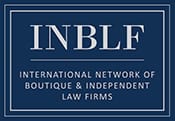Import Tariffs Apply to One Thing or Another
By Eric F. Greenberg, Attorney-at-law
Import Tariffs Apply to One Thing or Another
Questions recently arose about whether a specific shape of pasta was actually a drinking straw.
The other day, my pal Larry Friedman, also a lawyer, sent me an article he had found about the shortage of bucatini pasta. It’s a funny article, available on grubstreet.com. Bucatini is a tubular pasta shape with a hole longways through the middle. Larry thought the story would interest me because it included discussion of the Food and Drug Administration’s “standard of identity” for macaroni. (This column has discussed such standards in the past).
The story piqued his interest because it also described how people have been using bucatini as a straw instead of plastic straws, and any discussion of a thing that might be another thing is the essence of his law practice, which is concentrated in customs requirements for imports and exports. He helpfully explained the basics:
“Most imported items are subject to a duty based on a percentage of the value of the merchandise. For about half the merchandise that enters the U.S., that rate is “free,” meaning no duties are assessed. For dutiable goods, the rates range from a fraction of a percentage to around 40%. The average rate of duty is about 3%. Some footwear, for example has a 37.5% rate of duty.” The duty is based on the nature of the product and its country of origin. Because straws and macaroni likely have different rates, this is a “tariff classification” question.
Sometimes, tariffs are imposed in order to implement a specific government policy that isn’t directly related to the articles or products involved. “Tariffs can be assessed to offset unfair trade practices, to protect national security, and for other policy reasons,” Larry explains. “For example, President Trump has imposed a 25% tariff on a large group of products from China, a 25% tariff on steel from most countries, and a 10% tariff on aluminum from most countries.”
Packaging imports are included. “For example, there is a category of merchandise for plastic ‘Carboys, bottles, flasks, and similar articles,’” Larry says. “Plastic items in this category are subject to a 3% duty (and an additional 25% if from China). On the other hand, glass containers used for packing perfumes or other ‘toilet preparations’ are subject to a 2.5% duty if ‘produced by an automatic machine.’ If not, the rate jumps to 5.2%. The glass containers are also subject to the 25% duty on goods from China.”
Most people understand that when you import things or articles, you gotta consider the customs tariffs, if there are any, and that’s on top of whatever other regulatory obligations apply to it.
Sometimes companies and governments disagree about what a thing is.
“The classification controls the cost of importing goods and has a direct financial impact on clients. Classification is also used to indicate (but not conclusively) other regulatory requirements. For example, goods classified as plastic bottles might trigger both U.S. Customs and Border Protection and the FDA to examine the merchandise and determine whether it requires FDA clearance.”
Customs lawyers like Larry can help keep tariff costs down. “If we see an opportunity to reduce duties or otherwise create efficiencies for the importer through classification, we can submit requests to Customs for a binding classification opinion.” Or, “If Customs makes a classification determination with which we disagree, there is an administrative protest process to challenge that decision.”
Larry says classification is like a very technical puzzle, taking into account a broad range of facts. “The physical characteristics of the merchandise are the primary considerations, but we might also consider how the product is used after importation. The controversies often surround the meaning of words in the tariff, particularly when new products or technology come to the market.”
“As an example, there was a long-running controversy over the classification of sandwich wrappers consisting of aluminum foil laminated to paper and printed with restaurant logos. This product might have been classified as a paper, a label, or aluminum foil that has been ‘backed.’ Customs had to work through the meaning of the terms ‘label,’ ‘backed,’ and ‘printed.’ In the end, Customs decided that the wrappers were fully described as ‘Aluminum foil (whether or not printed, or backed with paper, paperboard, plastics or similar backing materials) of a thickness (excluding any backing) not exceeding 0.2 mm: backed: covered or decorated with a character, design, fancy effect or pattern.’ This carried a 3.7% rate of duty.”
What’s new in the tariff classification game? “Tariff classification has not changed very much since the introduction of the current tariff schedule in 1989,” Larry explains. “The big controversy at the moment is to what degree and under what circumstances should Customs or a reviewing court consider how a product is used after importation. The traditional rule is that Customs classifies merchandise in the condition in which it crosses the border.”
Separate from classification, there are heated disputes ongoing over the legality of the various tariffs President Trump imposed. (Larry’s too modest to tell you, but he is representing in a federal lawsuit a group of steel importers who didn’t get exemptions from the Trump administration’s high import tariffs on steel, alleging that the companies who did get the exemption got an unfair advantage.)
Yes, imports and tariffs are best thought of as one strategy among many for maximizing a company’s supply chain efficiencies. Doing that is, as they say, a thing. PW
Eric Greenberg can be reached at [email protected]. Or visit his firm’s Web site at www.ericfgreenbergpc.com.
INFORMATIONAL ONLY, NOT LEGAL ADVICE.


